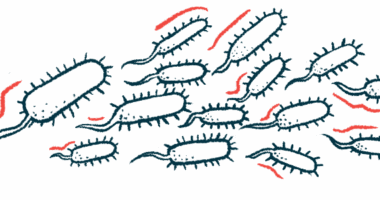Sutimlimab Increases Hemoglobin Levels in Patients with Cold Agglutinin Disease, First-in-human Trial Shows

Sutimlimab, an antibody against complement C1, increases hemoglobin levels in patients with cold agglutinin disease and prevents blood transfusions, a first-in-human trial shows.
The study, “Inhibition of Complement C1s improves severe hemolytic anemia in cold agglutinin disease: a first-in-human trial” was published in the journal Blood.
Autoimmune hemolytic anemias, such as cold agglutinin disease (CAD) are usually associated with high levels of circulating immunoglobulin M (IgM) self-antibodies. These defective antibodies recognize an antigen “I” present on the surface of red blood cells, activating an immune program called classical complement pathway that mark these cells to be destroyed by the liver. Particularly, in CAD, the auto IgM antibodies bind to red blood cells at lower temperatures, causing cell aggregation.
After IgM antibodies target and bind to red blood cells, C1 complement is activated and recruits a cascade of proteins present in the blood. Component 5 (C5) is one of the proteins to be called into action by the classical complement pathway. Blocking C5 using its inhibitor Soliris (eculizumab) showed a slight increase of hemoglobin (below 1 gram/dL of blood), a key constituent of red blood cells.
Until now, no therapy has been approved for the treatment of CAD. Corticosteroids used as general anti-autoimmunity therapy are frequently ineffective and require unacceptable high doses to produce a clinical benefit. Moreover, CAD patients often rely on chronic transfusions that cause severe complications such as immune responses against donor cells and iron overload.
Reseachers hypothesized that blocking an earlier factor within the complement pathway, such as C1, would be more efficient to prevent the destruction of red blood cells in patients with CAD.
They tested sutimlimab, an investigational C1 inhibitor antibody, developed by Bioverativ, in a Phase 1 trial (NCT02502903).
In the first phase, healthy volunteers were randomized to single and multiple doses of sutimlimab or a placebo. A following open-label phase tested the antibody in patients with complement-pathway-related diseases (Phase 1b).
A total of 10 patients (1 Asian, 1 Hispanic, and 8 Causasian) diagnosed with CAD with a hemoglobin level below 11 grams/dL and a median disease duration of five years were enrolled in the study.
Patients were treated with an initial dose of 10 milligrams of sutimlimab per kilogram of body weight, delivered into the blood (intravenously) for the first four days, in order to screen for any unforeseen adverse effects.
Following this first treatment, patients received four weekly treatments of 60 mg of sutimlimab per kg of body weight, for three weeks. Patients were followed for 49 to 53 days.
Sutimlimab levels remained above the threshold of 15.5 micrograms/milliliter for 22 to 28 days, the level required to inhibit the classical complement pathway by at least 90%.
During the first week of treatment, the median hemoglobin level increased significantly by 1.6 grams/deciliter, and by 3.9 grams/deciliter after six weeks.
Eight patients had increased levels of bilirubin, a marker of red blood cell destruction in the liver at the beginning of the trial. Sutimlimab treatment decreased this marker by 61%. None of the patients enrolled required red blood cell transfusions during the treatment.
Overall, “sutimlimab was well-tolerated and induced clinically meaningful increases in hemoglobin levels, even in patients with multiple previous lines of therapy, precluding the need for transfusions,” the study concluded.





